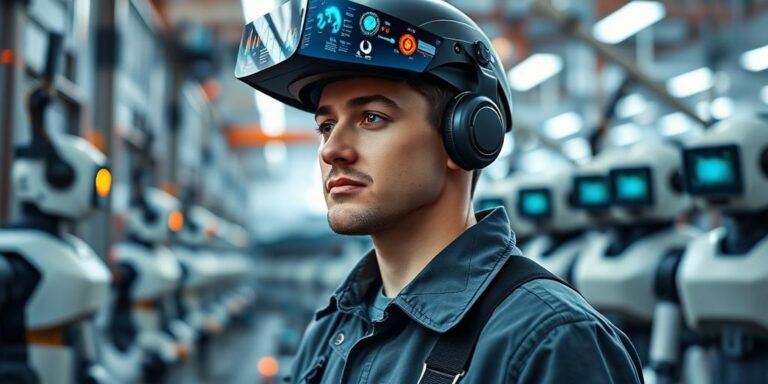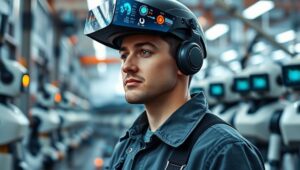Worker Safety in IIoT Environments: Wearables and Alerts (2025)
The Industrial Internet of Things (IIoT) is transforming workplaces, promising increased efficiency and productivity. However, this digital revolution also introduces new safety challenges. This article explores how wearable technology and alert systems are crucial for ensuring worker safety in evolving IIoT environments, focusing on the advancements expected by 2025.
The Rise of Wearable Technology in Industrial Safety
Wearable devices are no longer limited to fitness tracking. In industrial settings, they are becoming sophisticated tools for monitoring worker health, location, and environmental conditions. These devices can track vital signs, detect falls, and even monitor exposure to hazardous materials.
Types of Wearable Devices:
- Smartwatches and Bands: Monitor heart rate, activity levels, and provide haptic alerts.
- Smart Helmets: Equipped with sensors for detecting impacts, gas leaks, and proximity to hazards.
- Exoskeletons: Reduce physical strain and prevent injuries from repetitive tasks.
- Smart Clothing: Embedded with sensors to monitor temperature, posture, and exposure to chemicals.
Real-Time Alert Systems: Immediate Response to Hazards
Alert systems are vital for providing immediate warnings to workers in dangerous situations. Integrating these systems with IIoT infrastructure allows for real-time monitoring and response, minimizing the risk of accidents.
Key Features of Effective Alert Systems:
- Proximity Detection: Warns workers when they enter hazardous zones or approach dangerous equipment.
- Environmental Monitoring: Alerts workers to gas leaks, temperature extremes, or other environmental hazards.
- Fall Detection: Automatically detects falls and sends alerts to emergency responders.
- Biometric Monitoring: Detects signs of fatigue or distress and triggers alerts.
Data Analytics and Predictive Safety
The data generated by wearable devices and alert systems can be analyzed to identify potential safety risks and prevent accidents before they happen. Predictive safety analytics uses machine learning algorithms to identify patterns and predict when and where accidents are most likely to occur.
Benefits of Predictive Safety Analytics:
- Improved Risk Assessment: Identifies high-risk areas and tasks.
- Proactive Safety Measures: Allows for the implementation of preventative measures before accidents occur.
- Reduced Incident Rates: Lowers the overall number of workplace accidents and injuries.
- Enhanced Training Programs: Provides insights into areas where additional training is needed.
Challenges and Considerations
While the potential benefits of wearables and alert systems are significant, there are also challenges to consider:
- Data Privacy: Ensuring the privacy and security of worker data is crucial.
- Integration Complexity: Integrating new technologies with existing systems can be complex and costly.
- User Acceptance: Workers must be willing to wear and use the devices for the systems to be effective.
- Reliability: The devices and systems must be reliable and accurate to avoid false alarms and missed warnings.
The Future of Worker Safety in IIoT Environments (2025)
By 2025, wearable technology and alert systems will be even more integrated and sophisticated. We can expect to see:
- More Advanced Sensors: Improved accuracy and sensitivity in detecting hazards and monitoring worker health.
- AI-Powered Analytics: More sophisticated algorithms for predicting and preventing accidents.
- Seamless Integration: Easier integration with existing IIoT infrastructure.
- Personalized Safety Solutions: Customized solutions tailored to the specific needs of individual workers and workplaces.
Conclusion
Wearable technology and alert systems are essential tools for ensuring worker safety in IIoT environments. By monitoring worker health, detecting hazards, and providing real-time alerts, these technologies can significantly reduce the risk of accidents and injuries. As we move towards 2025, continued innovation and integration will further enhance the effectiveness of these systems, creating safer and more productive workplaces.




